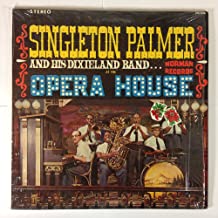
Daily Dose Of Jazz…
Singleton Palmer was born on November 13, 1912 in St. Louis, Missouri and began playing cornet at age 11, and was actively playing gigs with the Mose Wiley Band in St. Louis by 14. 1928 saw him playing tuba, and joined Oliver Cobb’s Rhythm Kings in 1929. His first recordings were with Cobb in 1929, and he continued to perform with the band through 1934.
Following Cobb’s death in 1931, Eddie Johnson took over leadership for the band, renaming it the St. Louis Crackerjacks. He recorded with the band under Johnson’s leadership in 1932, and switched to string bass in 1933. The following year Palmer joined Dewey Jackson on the riverboats, performing with him until 1941.
Singleton took a job at Scullin Steel, where he joined the company’s 45-piece big band, which performed for the employees in the cafeteria during the daily lunch hour. Additionally he began performing with George Hudson’s first band in 1941, continuing until 1947. Toward the end of the decade he got higher-profile performing and recording opportunities, including with Clark Terry in 1947 and Jimmy Forrest in 1948. In 1947 he joined Count Basie’s 18-piece jazz band, touring for 3 years and recording 11 sides.
In 1950 Palmer left Basie’s group and started his own band, the Dixieland Six. He led this Dixieland jazz ensemble in jam sessions at the Universal Dance Hall on the DeBaliviere Strip, performed at Gaslight Square at the Opera House, and recorded six albums between 1960 and 1967. Late in his life he became a source for jazz historians, offering oral history testimonies of his early years in the music industry.
Multi-instrumentalist Singleton Palmer, who played bass, cornet and tuba, and recorded with blues musicians Big Joe Williams and Sonny Boy Williamson, passed away on March 8, 1993, St. Louis.
More Posts: bandleader,bass,cornet,history,instrumental,jazz,music,tuba


